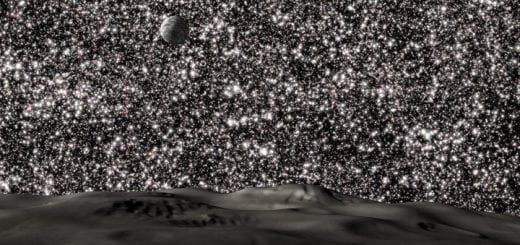Astronomical Firsts

The first time Richard Vo, ’14 Physics, looked into a telescope was last summer.
In January 2013, Vo began a research independent study with Physics and Astronomy Assistant Professor Aaron Romanowsky. Though Vo had been intrigued with astronomy and the stars, he didn’t quite understand what today’s astronomers do (which, incidentally, doesn’t always revolve around using telescopes). Romanowsky introduced him to software to find different astronomical objects, which upon further inspection may turn out to be stars, supernovas, galaxies, asteroids—any number of things twinkling in the night sky.

“I spent three months trying to figure out the programs,” Vo says. “I saw a whole different side of the computer world.”
Once he nailed down the computer skills, he stumbled upon his own discovery: an ultra compact dwarf galaxy, or UCD. And this collection of stars was the densest of its kind up to that point.
It seemed like he had found something right away,” Romanowsky says, “which is usually a mistake, but it turned out to be real.”
As a result of Vo’s discovery, he had the opportunity to do further research this spring at the W. M. Keck Observatory on the summit of Mauna Kea on the island of Hawaii. When he returned and shared his findings with his classmates, Michael Sandoval, ’15 Physics, wanted to get involved.
Barely a month after Vo shared his methods, Sandoval, too, made a discovery: an even-denser collection of stars.
The two undergraduates are now collaborating on a scientific paper detailing their discoveries.
Read more about Vo’s journey to stardom and Sandoval’s subsequent discovery.




